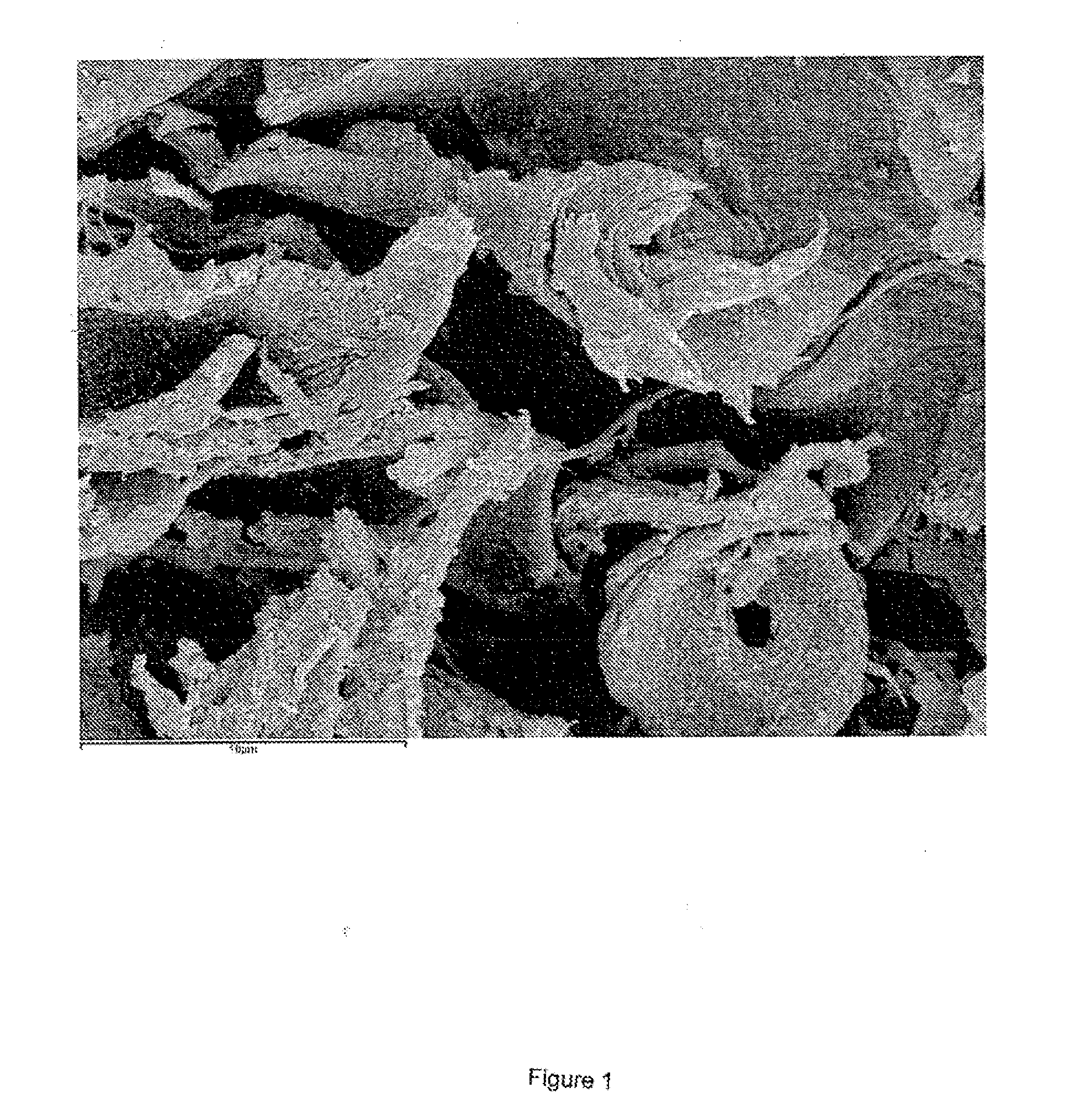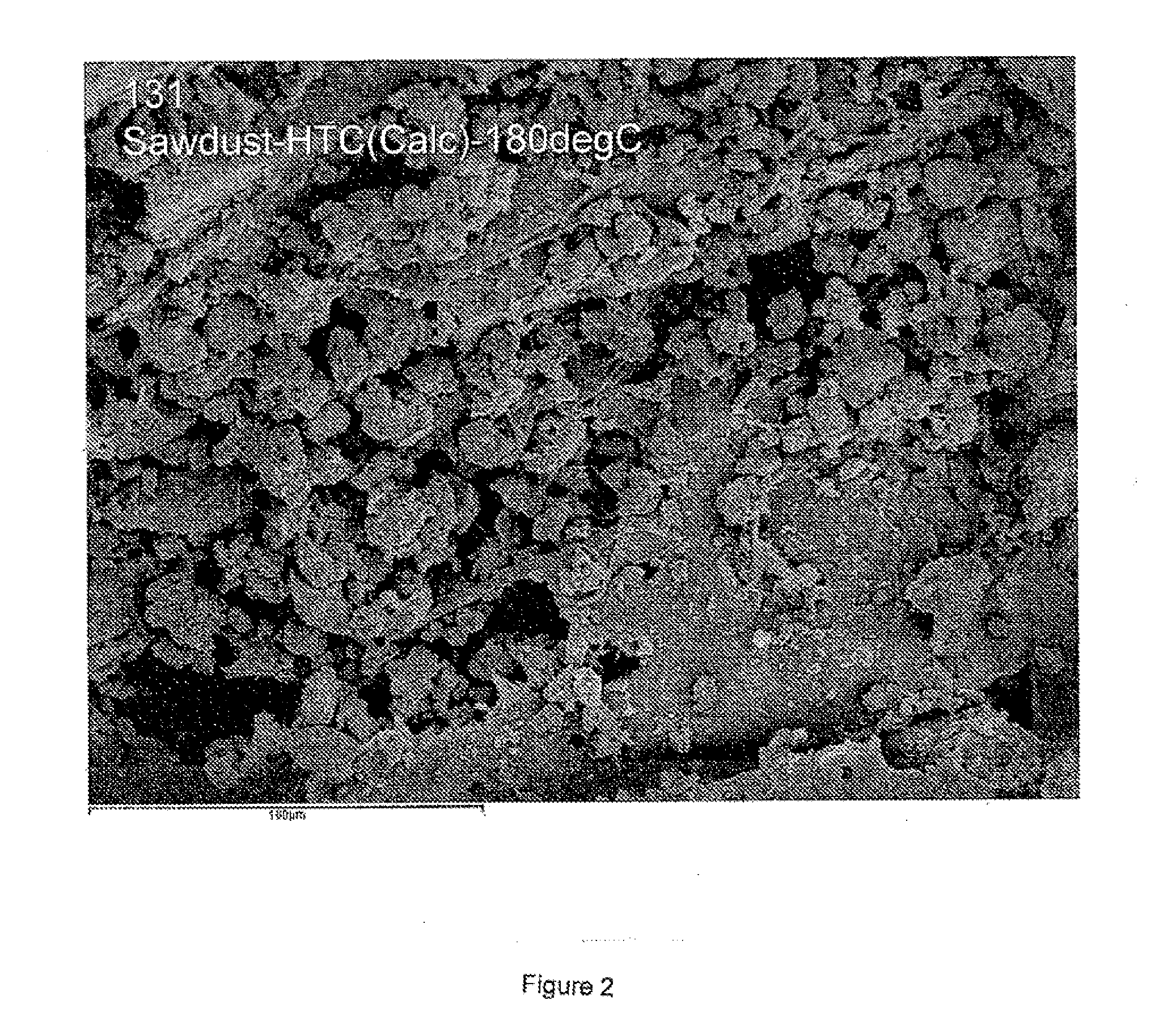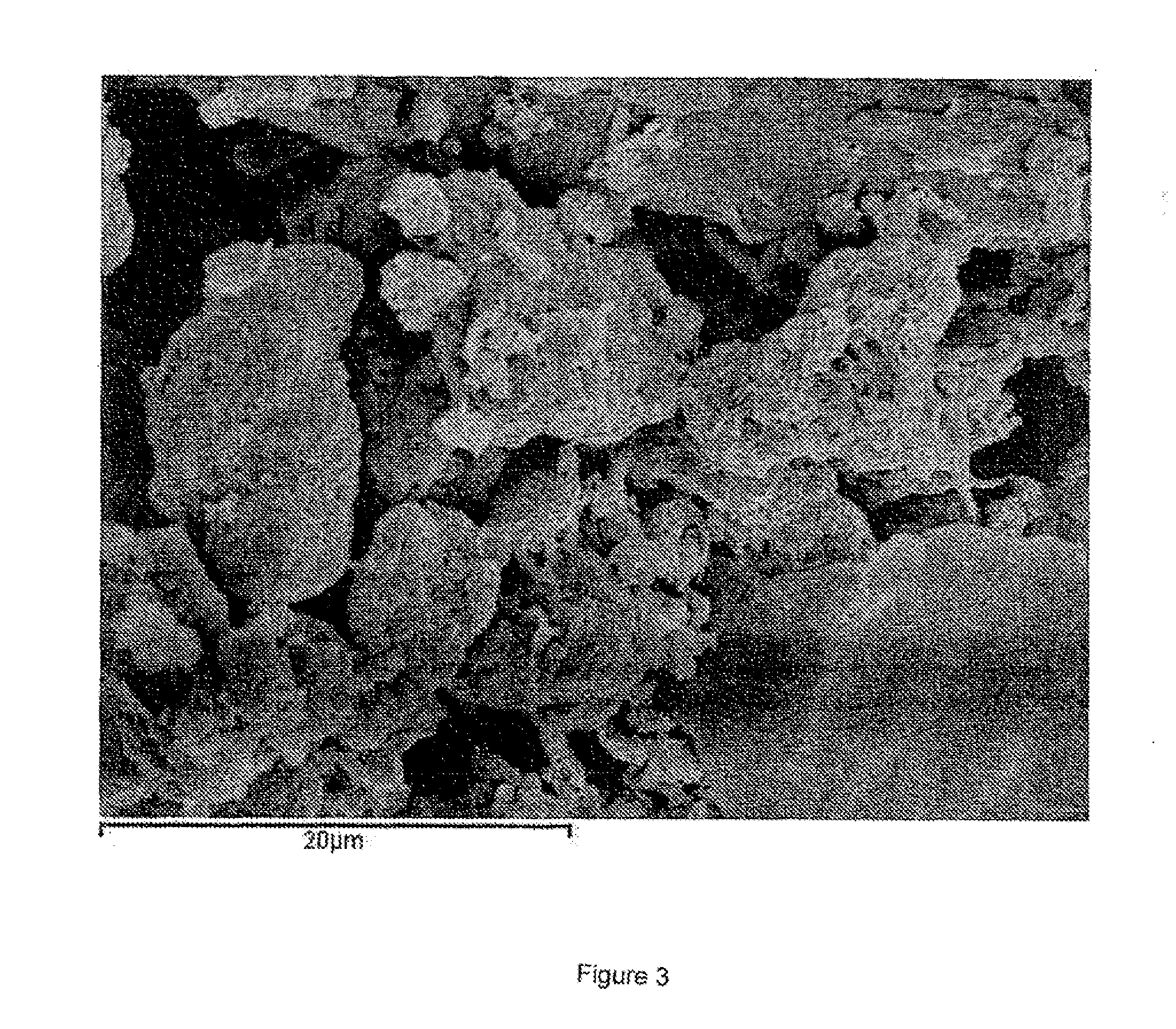Polymeric material of photosynthetic origin comprising particulate inorganic material
a technology of organic materials and polymers, applied in the petroleum industry, liquid carbonaceous fuels, fuels, etc., can solve the problems of difficult conversion of agricultural waste to ethanol by fermentation, time-consuming and expensive process, and the ability of most sophisticated fermentation enzymes to convert only a small amoun
- Summary
- Abstract
- Description
- Claims
- Application Information
AI Technical Summary
Benefits of technology
Problems solved by technology
Method used
Image
Examples
example 1
A. Sepiolite
[0073]A polymeric material having embedded therein small particles of Sepiolite clay is prepared as follows.
[0074]Step 1:
[0075]A suspension of partly dissolved Sepiolite clay is produced by slurrying the clay with an aqueous solution of hydrochloric acid.
[0076]Step 2:
[0077]Subsequently this suspension is contacted and mixed with wood particles having a particle size distribution in the range of from 1 micrometer to 100 micrometers. The particles are thoroughly soaked in the suspension of Step 1 for about 60 minutes.
[0078]Step 3:
[0079]Next the pH of the suspension formed in Step 2 is increased by the addition of NaOH. As a result, part of the dissolved Sepiolite clay re-crystallizes in the interior of the solid biomass. The presence of the crystalline clay particles is confirmed with X-ray diffraction and microscopy (SEM / TEM).
[0080]The example is repeated using sulfuric acid, nitric acid, acetic acid and formic acid, respectively, for dissolving or partly dissolving the c...
example 2
[0099]Step 1:
[0100]A solution of MgCl2 is prepared by dissolving MgCl2 in water.
[0101]Step 2:
[0102]Subsequently this solution is contacted and mixed with straw particles. The particles are thoroughly soaked with the solution of Step 1 for 30 minutes.
[0103]Step 3:
[0104]Next the pH of the suspension formed in Step 2 is increased, by the addition of NaOH. As a result, part of the Mg re-crystallizes in the form of MgO and Mg(OH)2 in the interior of the solid biomass. The presence of crystalline particles is confirmed by X-ray diffraction and microscopy (SEM / TEM).
[0105]The example is repeated with biomass particles obtained from wood, corn, husks, bagasse, and algae, respectively. Similar results are obtained.
example 3
[0106]Step 1:
[0107]A solution of MgCl2 is prepared by reacting Mg(OH)2 with an aqueous solution of HCl.
[0108]Step 2:
[0109]Subsequently this solution is contacted and mixed with solid organic biomass particles. The particles are thoroughly soaked with the solution of Step 1. The uptake of moisture is monitored by measuring the loss on ignition (LOI) of the soaked particles and by chemical analysis, monitoring the concentration of the inorganic material in the solution. The soaking is considered completed when no significant change is recorded in the measured LOI after a 10-minute interval. Base is added to cause precipitation of the Mg.
[0110]Step 3:
[0111]Next the suspension formed in Step 2 is partly dried. As a result, part of the Mg re-crystallizes in the form of an amorphous Mg material and / or Mg(OH)2 (brucite) in the interior of the solid biomass. The presence of crystalline material is confirmed with X-ray diffraction and microscopy (SEM / TEM).
[0112]Step 4:
[0113]The material prod...
PUM
| Property | Measurement | Unit |
|---|---|---|
| temperature | aaaaa | aaaaa |
| mean particle size | aaaaa | aaaaa |
| mean particle size | aaaaa | aaaaa |
Abstract
Description
Claims
Application Information
 Login to View More
Login to View More - R&D
- Intellectual Property
- Life Sciences
- Materials
- Tech Scout
- Unparalleled Data Quality
- Higher Quality Content
- 60% Fewer Hallucinations
Browse by: Latest US Patents, China's latest patents, Technical Efficacy Thesaurus, Application Domain, Technology Topic, Popular Technical Reports.
© 2025 PatSnap. All rights reserved.Legal|Privacy policy|Modern Slavery Act Transparency Statement|Sitemap|About US| Contact US: help@patsnap.com



